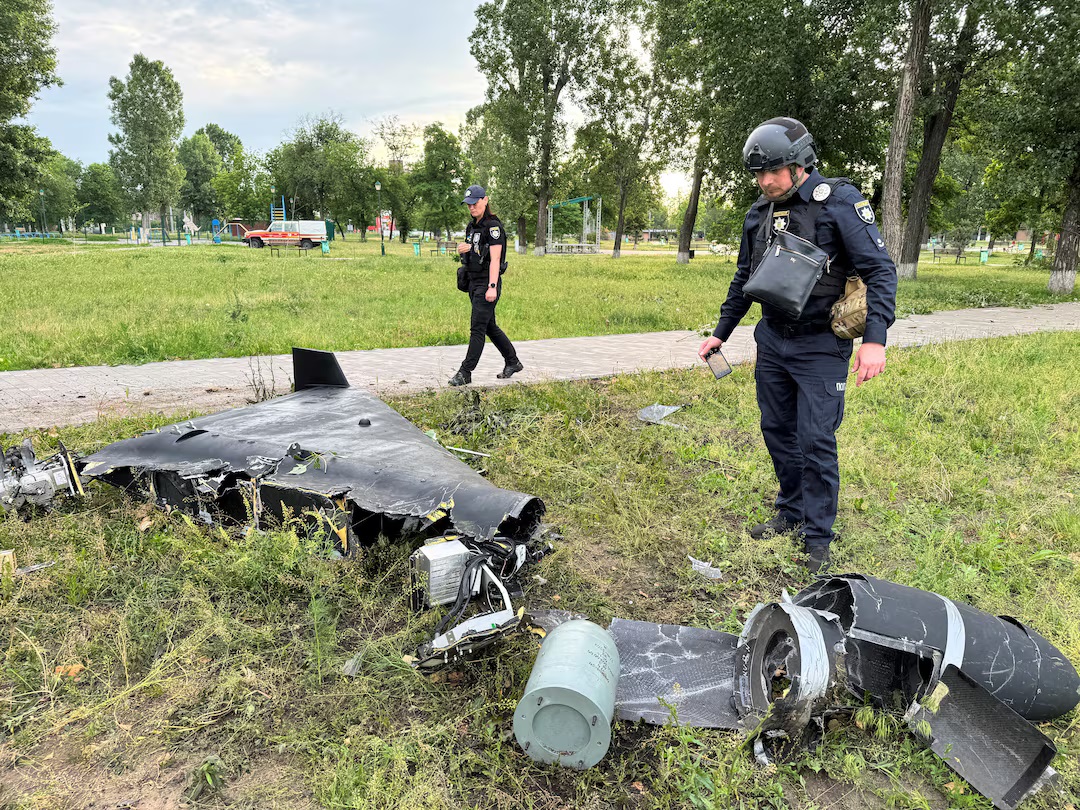Operators from the Kramatorsk Border Detachment discovered hidden Russian positions in the Vovchansk direction of Kharkiv. Utilizing UAV technology, they identified enemy fortifications and likely hit a field ammunition depot with FPV drones.
Ukrainian UAV Operators Uncover and Strike Hidden Russian Positions in Kharkiv Region


Unmanned
Aerial Vehicle Operators of Kramatorsk Border Detachment Discover
Hidden Russian Positions in Kharkiv Region
In a significant
development on the frontlines of the ongoing conflict, operators of
unmanned aerial vehicles (UAVs) from the Kramatorsk Border Detachment
have successfully uncovered concealed Russian positions in the
Vovchansk direction, located in the Kharkiv region. This information
was reported by the Operational Tactical Unit (OTU), which
highlighted the crucial role of modern technology and drone warfare
in shaping the current dynamics of the war.
The use of UAVs
has become increasingly important in this conflict, particularly for
surveillance, reconnaissance, and combat operations. UAV operators
from the Kramatorsk detachment, using advanced drones, were able to
locate hidden Russian fortifications, exposing critical elements of
their defensive strategy in the Vovchansk sector. The detection of
these positions not only provides vital intelligence for Ukrainian
forces but also enhances their ability to disrupt and degrade the
operational capacity of Russian troops in the area.
Following
the discovery of the hidden positions, Ukrainian forces swiftly
deployed First-Person View (FPV) drones to target these Russian
fortifications. FPV drones, often referred to as kamikaze drones due
to their use in one-way strike missions, have proven highly effective
in precision strikes on enemy infrastructure and assets. According to
the OTU report, these drones managed to strike the Russian positions
successfully, with a high likelihood of having hit a field ammunition
depot belonging to the Russian forces.
The strikes are
believed to have caused significant damage to the enemy’s
fortifications, and the probable destruction of the field ammunition
depot could deal a considerable blow to the Russian military's supply
lines in this region. Ammunition depots are critical for sustaining
front-line operations, and their destruction could hamper the
occupiers’ ability to maintain prolonged resistance or launch new
offensives.
The use of FPV drones, in particular, has grown in
prominence in the Ukraine-Russia conflict, with both sides employing
these technologies to gain a tactical edge on the battlefield. These
drones offer real-time video feeds and allow operators to pilot them
remotely, often guiding them toward precise targets. This precision,
combined with the relative affordability and ease of deployment,
makes FPV drones a favored weapon in modern warfare.
Vovchansk,
located in the Kharkiv region, has been a site of ongoing clashes
between Ukrainian and Russian forces. This region holds strategic
importance due to its proximity to the Russian border and serves as a
key point of contention in the broader conflict. Ukrainian forces
have been working relentlessly to reclaim territory and push back
Russian advances in the Kharkiv region, with drone strikes playing a
pivotal role in this effort.
The successful operation in the
Vovchansk direction underscores the growing importance of UAVs and
drone warfare in modern military strategies. It also highlights the
resourcefulness of Ukrainian forces in adapting to the evolving
nature of the conflict and leveraging cutting-edge technology to
outmaneuver their adversaries. The strike on the field ammunition
depot, if confirmed, would mark another victory for the Ukrainian
military in its ongoing efforts to disrupt Russian supply chains and
degrade their operational capabilities.
As the conflict
continues, the role of UAV operators and drone strikes is likely to
expand, with both sides investing in these technologies to gain an
upper hand. For Ukraine, the ability to conduct such precision
strikes on hidden enemy positions offers a significant tactical
advantage, allowing them to inflict damage on Russian forces while
minimizing the risk to their own troops.
The Kramatorsk border
detachment’s discovery and subsequent strike in the Vovchansk
direction is a testament to the effectiveness of these modern combat
strategies. It is expected that further details on the impact of
these strikes will emerge in the coming days, but early reports
indicate that the operation has dealt a significant blow to Russian
forces in the Kharkiv region.

 বাংলা
বাংলা  Spanish
Spanish  Arabic
Arabic  French
French  Chinese
Chinese 







